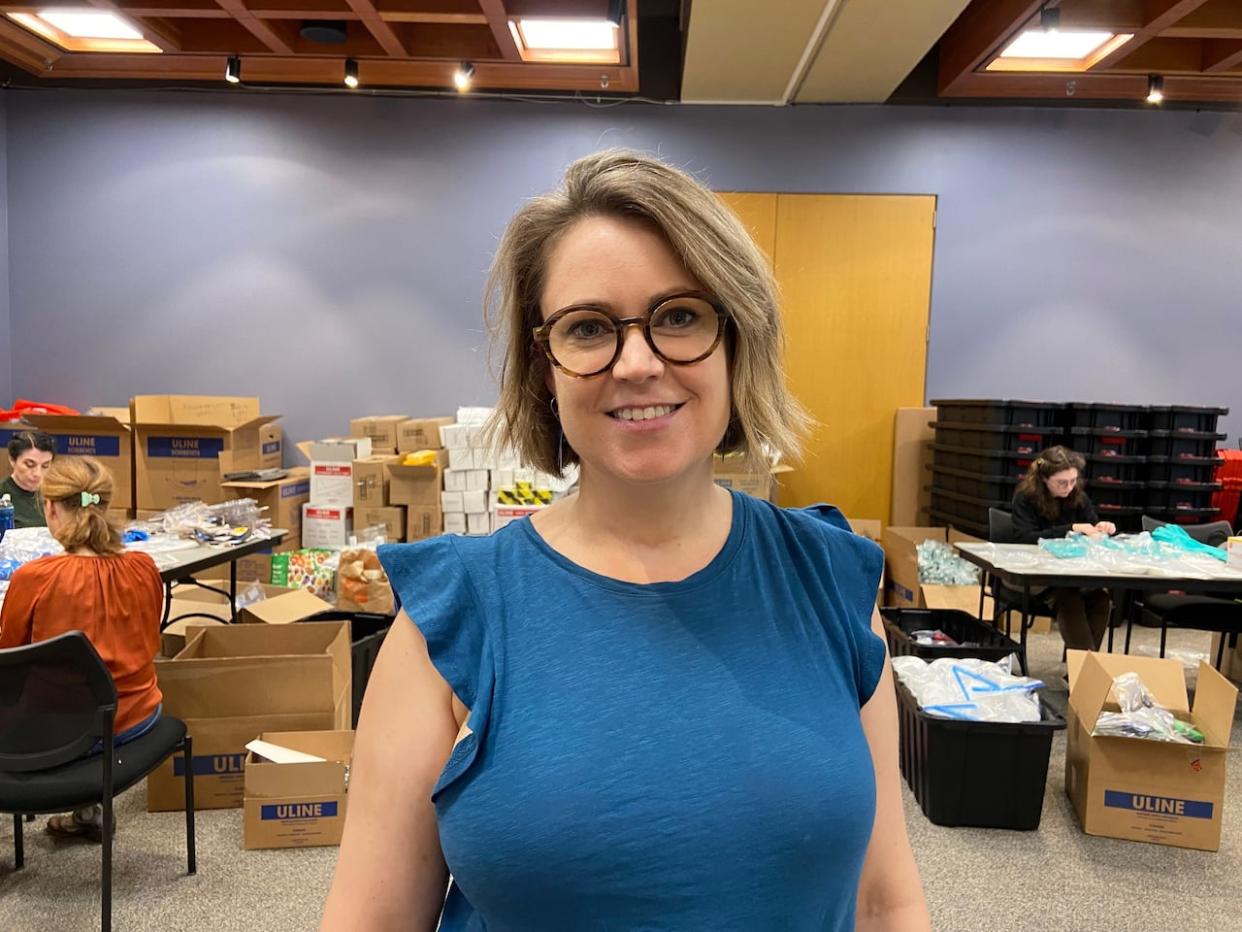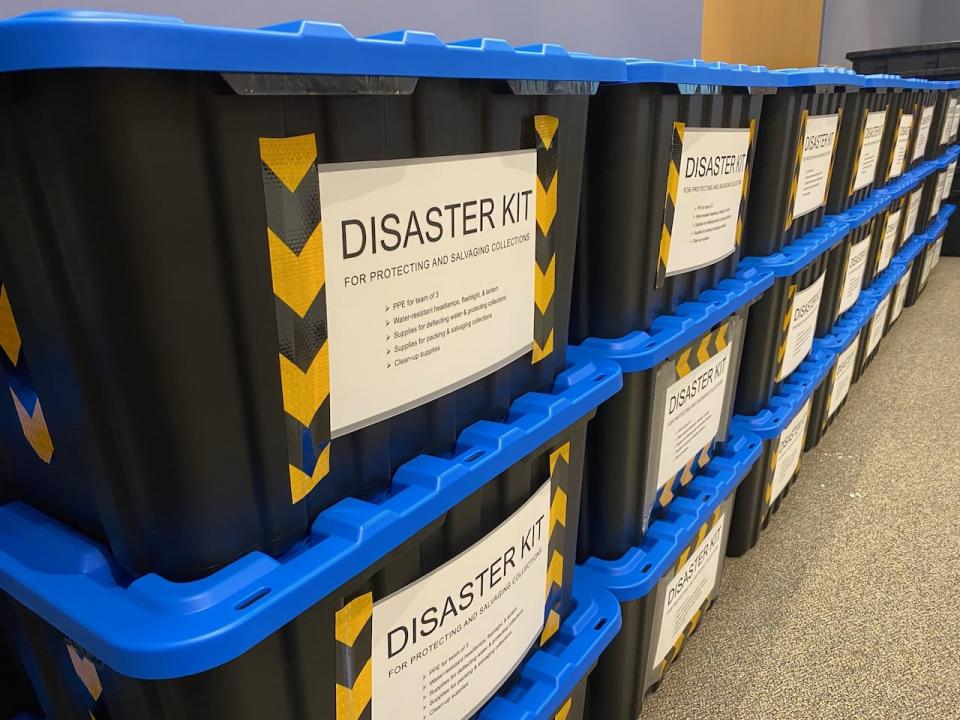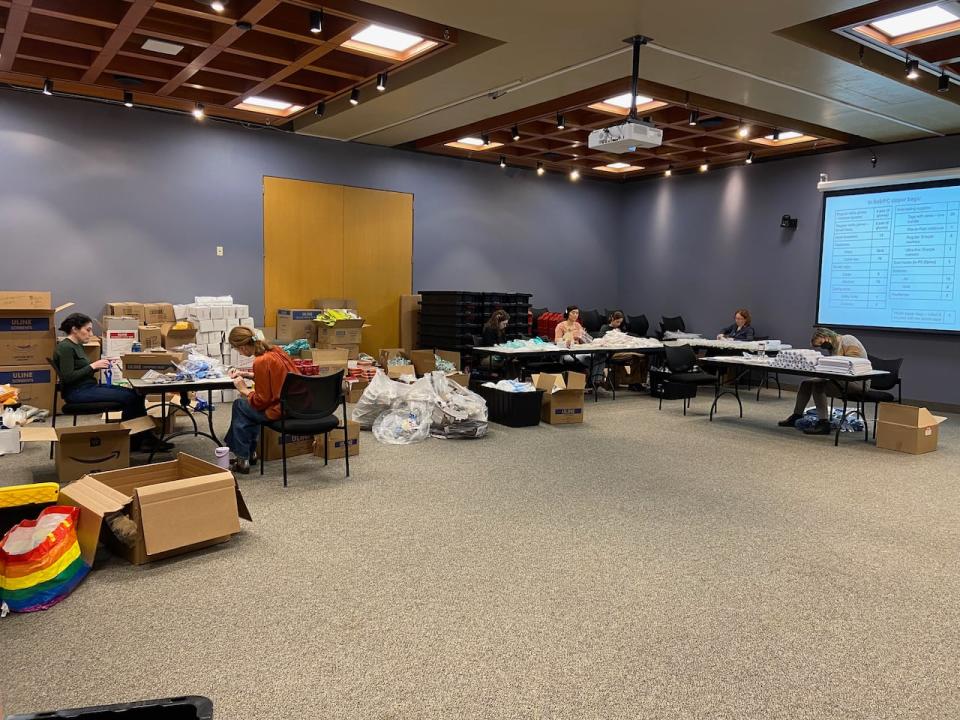Disaster kits could help save historical documents during extreme weather

In the age of increasingly violent storms, wildfires and flooding, the Council of Nova Scotia Archives is working to protect some of the province's most vulnerable artifacts and documents.
The council has put together "disaster kits" that will be distributed to 73 museums and archives throughout the province over the next couple of weeks.
Sharon Murray, the council's archives advisor, said the kits were created with water in mind, whether that's from rain storms, leaky pipes or firefighters hosing down the building in case of a fire.
"These are kits that contain supplies that will help heritage organizations … protect their collections and to salvage them, so to rescue them, get them out of harm's way," Murray told CBC Radio's Information Morning Halifax.
"Which, as I'm sure everyone can imagine, is a big concern for folks because the reason that archives and museums have the things they have is because they're one-of-a-kind and they can't be replaced."

Disaster kit totes include personal protective equipment, a small toolbox, a tarp, towels, large plastic bags, plastic sheeting and plastic storage boxes, among other items. (Erin MacInnis/CBC)
The kits include personal protective equipment, waterproof lighting, a small toolbox, a tarp, various forms of tape, towels, absorbent material, large plastic bags, plastic sheeting and plastic storage boxes, among other items for patching holes, cleaning up and storing artifacts safely.
Murray said the idea for the disaster kits came after post-tropical storm Fiona hit the province last September, bringing strong winds and heavy rain that cut power and washed out roads for days.
She said the council had implemented disaster supply depots in Yarmouth, Halifax and Sydney about 10 years ago, but during Fiona, archive members couldn't access them due to the road closures and travel restrictions.
That was a problem, Murray said, so the council secured a grant from the Department of Communities, Culture, Tourism to create the individual kits that can be kept at archives around the province.
She said these severe weather events weren't top of mind during archival training 10 to 20 years ago, but how to prevent damage is becoming necessary for archives and museums amid the climate crisis.
Murray said that became more apparent in the spring when wildfires raged throughout the province, and in the early summer when historical flooding swamped the central region.
"I'm sure there's lots that's been lost to all of the natural disasters we've had before. Fires, floods, you name it. It's a lot of responsibility in some ways, being a steward of cultural heritage, but it's incredibly meaningful work," Murray said.
"And I think for a lot of our members, they do feel that they are doing a service to their community by preserving and promoting the heritage of their people in that region and at times like this, it's really scary."

Volunteers with the Council of Nova Scotia Archives were busy putting the disaster kits together last week. (Erin MacInnis/CBC)
Angie MacIsaac, the executive director of the Port Hastings Historical Society Museum and Archives, can attest to that.
She said heavy rainfall last fall caused a leak in their facility, but there were no materials on site to fix it.
"We went scrambling, trying to save the collection. [It] wasn't much of a leak, but it still made it difficult," MacIsaac said.
"If it would have happened on a weekend — we do operate in a small community so things may not have been open on a Sunday to be able to go get the supplies we needed."
She said luckily none of their archival items or artifacts were damaged, but a disaster kit could have taken away some of the stress at the time.
"Most of the buildings that house archives are older facilities and harder-to-maintain facilities. We work on a limited budget. Our finances are always to the penny and tight, so … the kit makes everything there at our fingertips ready to go in case something happens," she said.
Murray said that's one of the goals of these kits — to take some worry away from smaller rural institutions that hold valuable documents and artifacts.
"Part of what both archives and museums offer to people — whether they live here or are visiting — is an opportunity to connect with history in a really tangible way, and that tangibility of it is what is at the biggest risk here," she said.
"And so being able to see artifacts on display or to actually flip through a book that has your grandmother's name in it — that kind of experience cannot be replicated digitally, and that is what we're at risk losing."
MORE TOP STORIES


